9 Engaging Kinesthetic Learning Activities for 2025

In a world saturated with screens and passive learning, the power of 'doing' has never been more critical. Kinesthetic learners, who thrive on physical engagement, often find traditional educational settings challenging. The reality is, however, that everyone benefits when we move our bodies to help our minds grasp new concepts. This guide is your ultimate resource for transformative kinesthetic learning activities designed to boost retention, spark curiosity, and make learning an unforgettable adventure.
We've curated a definitive list of 9 powerful methods that go beyond generic advice. You'll find specific, actionable strategies for everything from hands-on science experiments and interactive role-playing to integrating cutting-edge technology. Each activity is broken down with practical implementation details, age-range suggestions, and exciting new product recommendations that bring these concepts to life.
Get ready to ditch the static lectures and embrace a dynamic approach. This article will show you exactly how to implement engaging kinesthetic learning activities, revolutionizing the way your family can learn, grow, and discover. Let's dive into the strategies and tools that turn abstract ideas into tangible knowledge.
1. Hands-On Science Experiments
Hands-on science experiments are a cornerstone of kinesthetic learning, transforming abstract scientific principles into tangible, memorable experiences. This approach allows learners to physically manipulate materials, observe cause-and-effect relationships firsthand, and connect theoretical knowledge with real-world outcomes. Instead of just reading about a chemical reaction, they get to mix the solutions and see it happen. This active engagement makes complex topics more accessible and easier to understand.
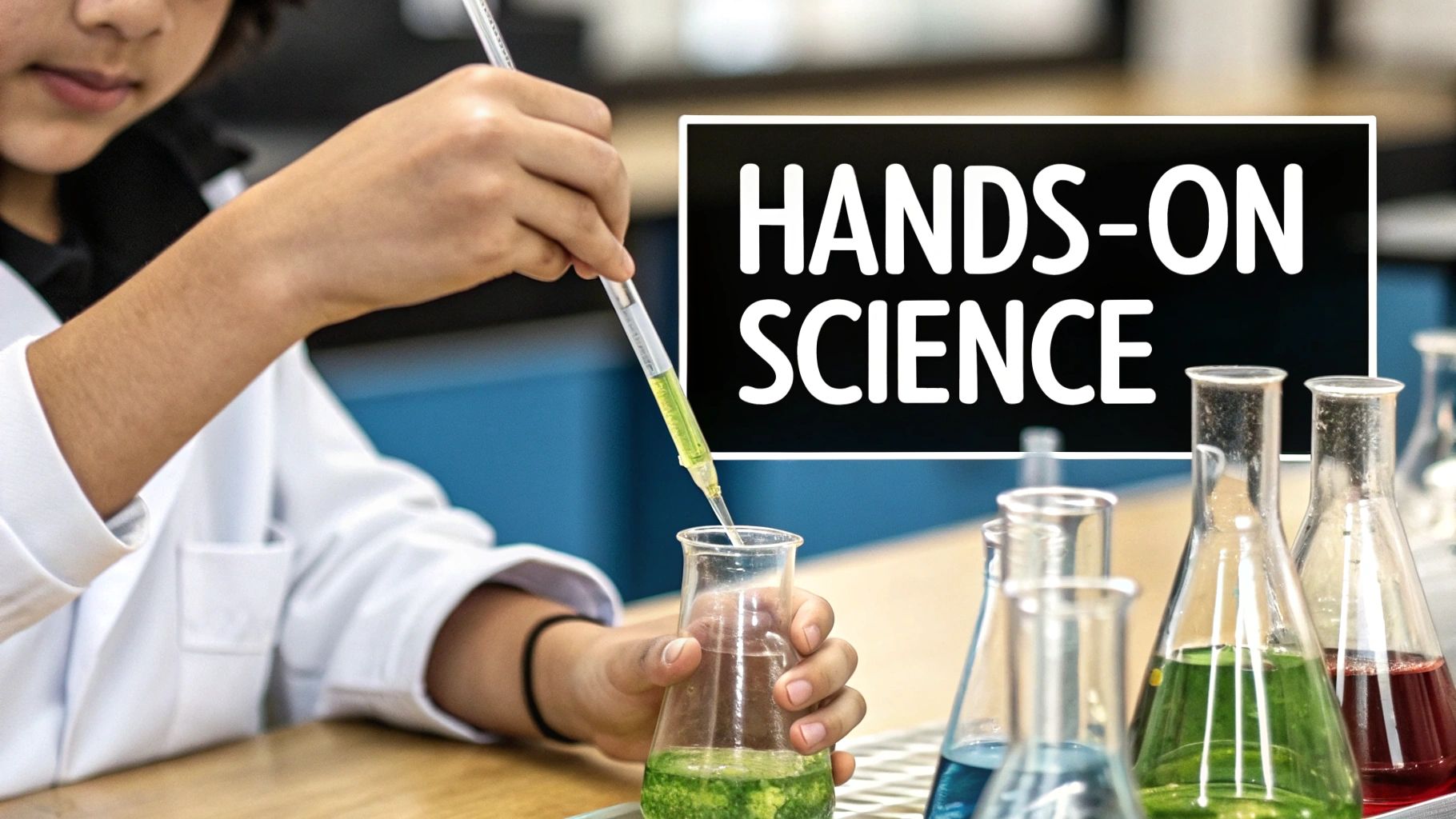
This method is highly effective because it engages multiple senses and encourages critical thinking and problem-solving. From classic volcano-making projects in elementary school to complex titration labs in high school chemistry, the act of doing solidifies learning in a way passive observation cannot. The philosophy, championed by pioneers like Maria Montessori and institutions like the Exploratorium, proves that direct interaction is key to deep comprehension.
Actionable Tips for Implementation
To make these kinesthetic learning activities successful, focus on preparation and structured inquiry.
- Safety First: Always establish and communicate clear safety protocols. For any experiment, especially those involving chemicals or heat, ensure proper supervision and safety gear are available.
- Predict and Reflect: Encourage learners to form a hypothesis before starting. Ask them: "What do you think will happen?" After the experiment, facilitate a discussion about the results versus their predictions.
- Prepare Meticulously: Assemble all materials in advance. A pre-packaged science kit can be a fantastic, hassle-free way to ensure you have everything needed for a successful and engaging experiment.
Unlock the thrill of discovery without the hassle of sourcing materials. Pre-made kits are your secret weapon for creating unforgettable learning moments. Jumpstart your journey with our top picks for easy STEM activities that guarantee a seamless, exciting, and educational experience right out of the box.
2. Role-Playing and Simulations
Role-playing and simulations are powerful kinesthetic learning activities that immerse learners in specific scenarios, allowing them to embody different perspectives and practice skills in a controlled yet realistic setting. This method moves beyond theoretical understanding by having participants actively engage with problems, make decisions, and experience the consequences of their actions. Instead of simply reading about a historical event or a business negotiation, students live it, creating a deep, contextual understanding that is difficult to achieve through passive learning.
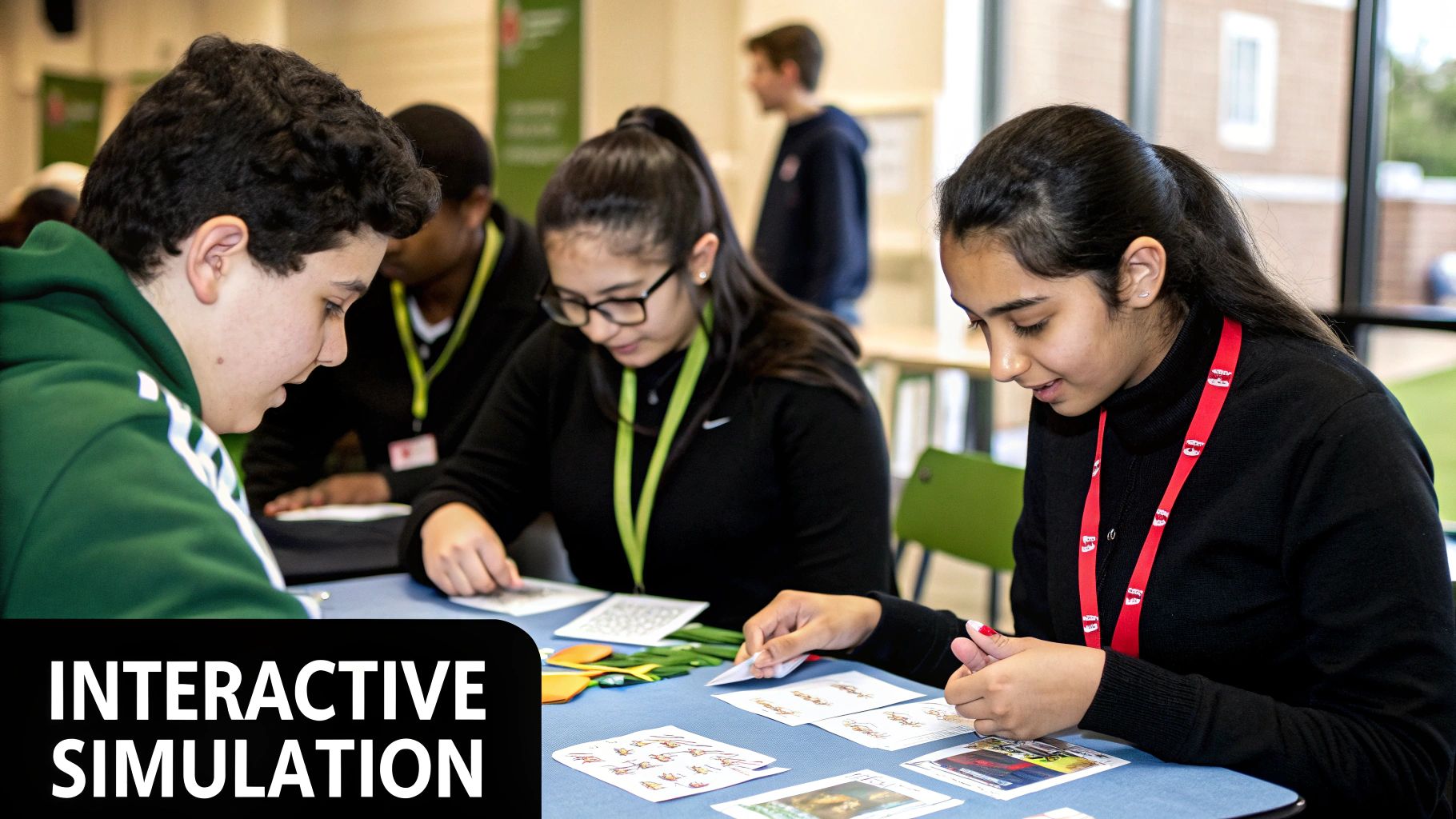
This approach is highly effective for developing empathy, communication skills, and critical thinking. It has been popularized by diverse institutions, from military war games and pilot flight simulators to the case-study method at Harvard Business School and Model UN conferences in schools worldwide. By stepping into another’s shoes, learners connect emotionally and intellectually with the material, making lessons in history, civics, and even social skills profoundly memorable and impactful.
Actionable Tips for Implementation
To maximize the educational value of role-playing, a clear structure and thoughtful facilitation are key.
- Establish Clear Guidelines: Before starting, define the rules, objectives, and boundaries of the simulation. This ensures the activity remains productive and everyone feels safe to participate fully.
- Provide Detailed Backgrounds: Equip participants with sufficient information about their roles, including motivations, goals, and constraints. This helps them act authentically within the scenario.
- Debrief Thoroughly: Post-simulation discussion is crucial. Facilitate a conversation about what happened, why it happened, and what was learned. Ask questions like, "What would you do differently next time?"
Spark your child’s imagination and social skills with the perfect tool for early role-play. A high-quality playset provides the ultimate stage for exploring different roles and real-world interactions. Elevate their playtime with this incredible wooden toy shop playset, expertly designed to foster hands-on, scenario-based learning and endless fun.
3. Educational Games and Gamification
Educational games and gamification infuse learning with the engaging mechanics of play, transforming standard lessons into interactive and motivating quests. This approach leverages rules, points, and competition to captivate learners, making the process of acquiring knowledge feel less like a chore and more like an exciting challenge. By turning study sessions into games, abstract concepts become interactive puzzles to be solved, actively involving the kinesthetic learner's need for doing and participating.
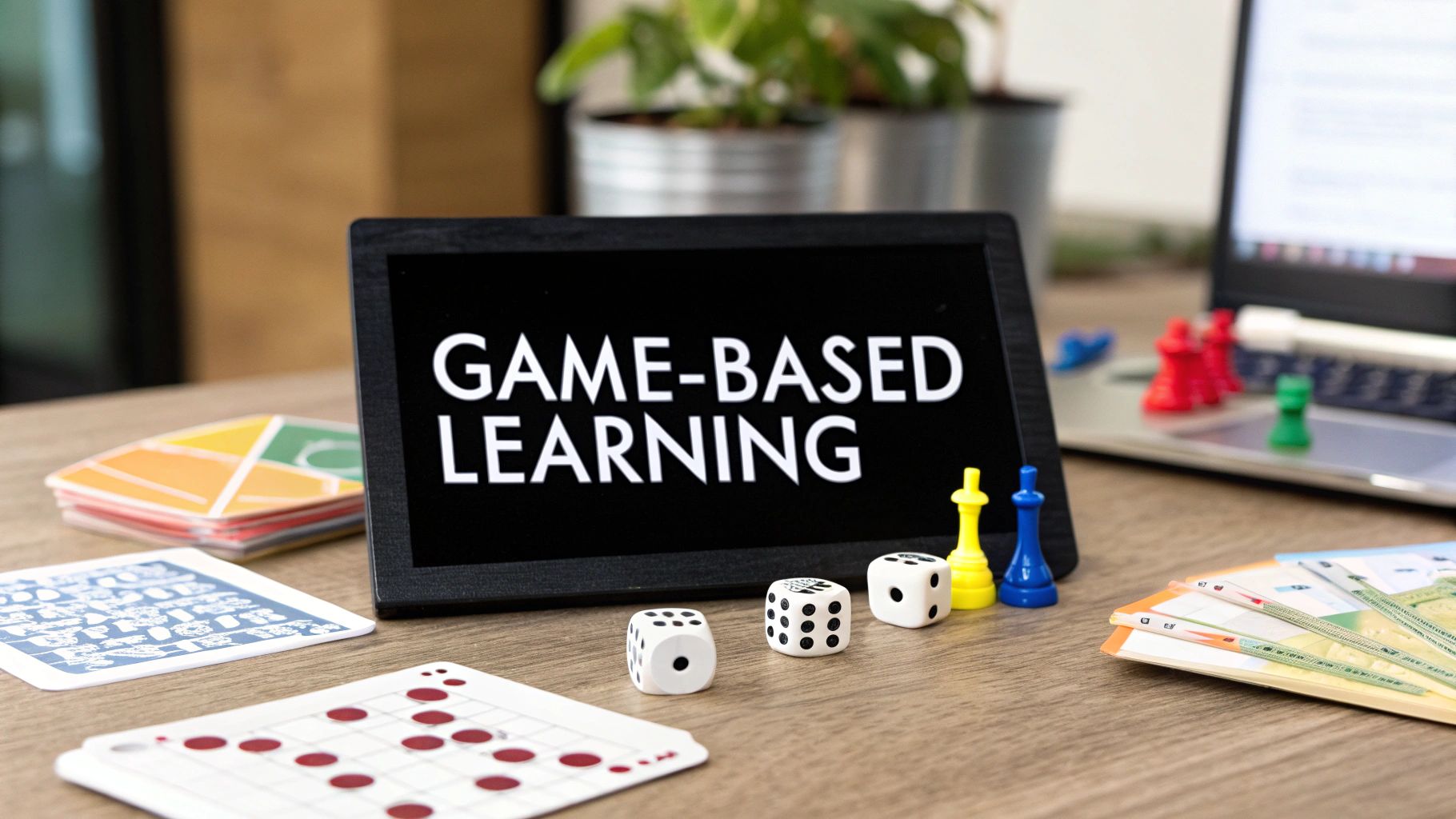
This method is incredibly effective because it taps into natural human desires for achievement, competition, and reward. Platforms like Kahoot! turn classroom reviews into fast-paced quizzes, while Minecraft Education Edition allows students to build historical sites or explore cellular biology. The philosophy, championed by advocates like Jane McGonigal and Karl Kapp, shows that well-designed game mechanics can significantly boost engagement and information retention, making these powerful kinesthetic learning activities.
Actionable Tips for Implementation
To successfully integrate gamification, the focus should be on aligning game elements with clear educational goals.
- Align with Objectives: Ensure every game mechanic, from earning points to completing levels, directly supports a specific learning outcome. Don't just play for play's sake; connect the fun to the curriculum.
- Balance Competition and Collaboration: While competitive elements are motivating, incorporate opportunities for teamwork. This helps develop social skills and ensures that learning remains a positive, shared experience for everyone.
- Provide Clear Instructions: A game is only fun if you know how to play. Clearly explain the rules, objectives, and how to win before starting. This prevents frustration and keeps the focus on learning.
4. Physical Movement and Exercise Integration
Integrating physical movement and exercise into learning activities leverages the powerful, scientifically-proven connection between the body and the brain. This method moves beyond traditional desk-based learning, using bodily motion to energize cognitive processes, improve focus, and solidify memory retention. Instead of passively absorbing information, learners physically embody concepts, such as doing jumping jacks for each correct math answer or using yoga poses to form letters of the alphabet. This active participation makes learning a full-body experience, boosting engagement and making abstract ideas concrete.
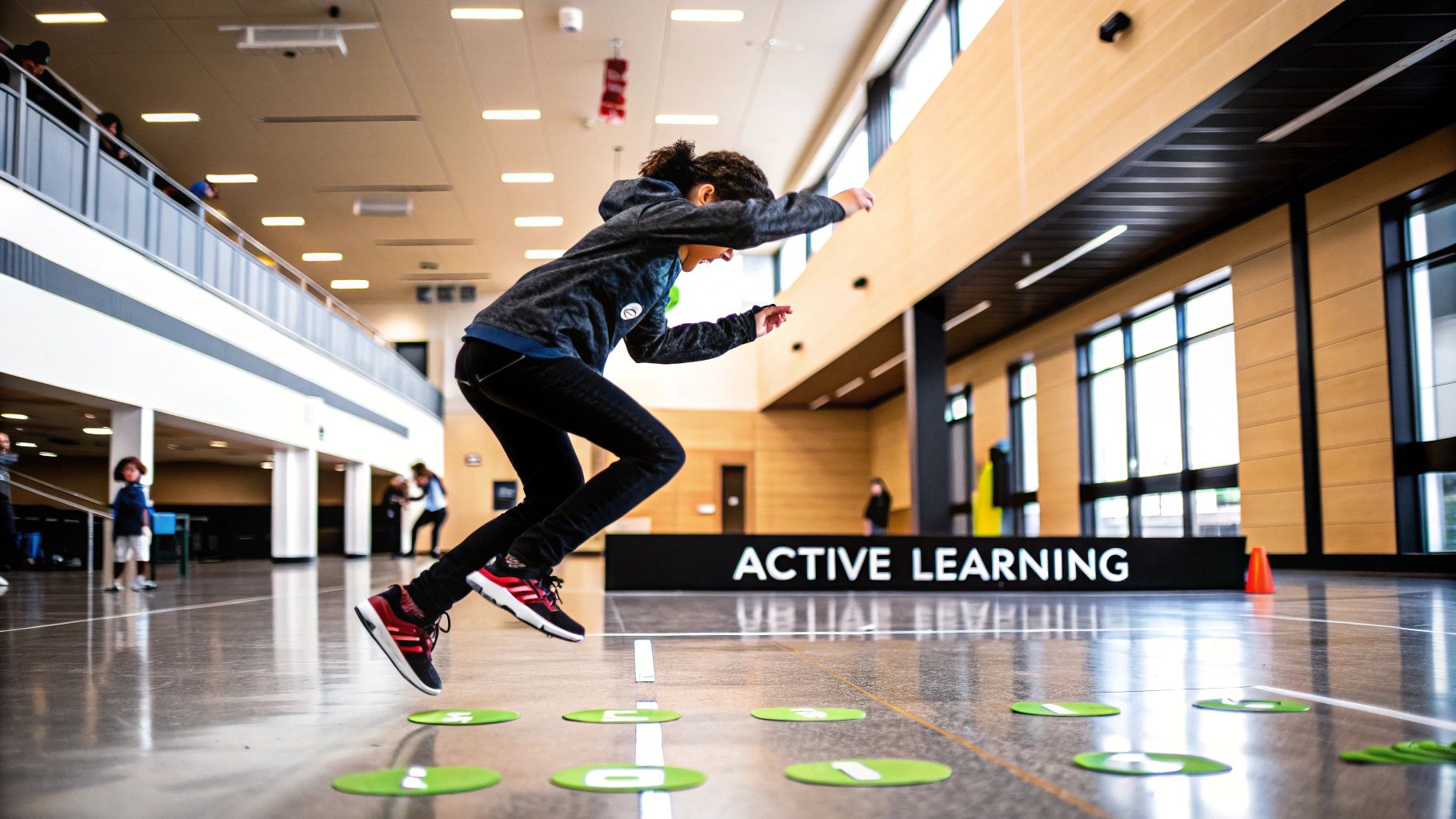
This approach is highly effective because physical activity increases blood flow and oxygen to the brain, which enhances neural connectivity and function. The concept, popularized by experts like Dr. John Ratey in his book Spark, demonstrates that movement is not a break from learning but a core component of it. From creating giant playground maps to learn geography to using dance to interpret historical events, these kinesthetic learning activities turn any space into an interactive classroom.
Actionable Tips for Implementation
To successfully blend movement with academics, prioritize safety, clarity, and intentionality.
- Start Simple and Build Up: Introduce basic movements first, like stretching or walking, before progressing to more complex activities like choreographed dances or obstacle courses. This helps build confidence and ensures learners are comfortable.
- Ensure a Safe Environment: Clear adequate space for movement to prevent trips and falls. Establish ground rules for safe interaction and ensure any equipment used is age-appropriate and secure.
- Link Movement to Objectives: Connect every physical action directly to a learning goal. For example, have students step on numbered mats to solve equations or hop between continents on a floor map.
- Adapt for All Abilities: Modify activities to be inclusive of all physical capabilities. Offer seated variations or alternative movements so every learner can participate fully and benefit.
Ready to get your learners moving? Transform any room into a playground for the mind with tools designed to boost balance, coordination, and fun. Don't miss out on these innovative balance stepping stones, the perfect product for creating exciting indoor and outdoor challenges that make learning an adventure.
5. Manipulatives and Hands-On Materials
Manipulatives and hands-on materials serve as powerful kinesthetic learning activities by giving physical form to abstract ideas. These are tangible objects that learners can touch, move, and arrange to explore concepts, solve problems, and build understanding from the ground up. By interacting with these tools, students bridge the gap between abstract symbols and concrete reality, making complex topics like mathematics and science much more intuitive and less intimidating.
This method is incredibly effective because it allows for direct engagement and self-discovery. Using base-ten blocks to understand place value or fraction tiles to visualize division turns a passive lesson into an active investigation. The approach, heavily influenced by the work of educators like Maria Montessori and mathematicians like Zoltan Dienes, proves that physically constructing knowledge leads to deeper, more lasting comprehension and boosts problem-solving confidence.
Actionable Tips for Implementation
To maximize the impact of manipulatives, ensure their use is both structured and purposeful.
- Start with Exploration: Before a structured lesson, allow learners free time to simply explore the materials. This satisfies their curiosity and helps them become familiar with the tools, leading to better focus during the activity.
- Connect to Abstract Concepts: Explicitly link the physical action to the abstract concept it represents. For example, say, "See how these two '5' Cuisenaire rods are the same length as the '10' rod? That's because 5 + 5 = 10."
- Establish Clear Routines: Set up and communicate clear rules for using, cleaning, and storing the manipulatives. An organized system prevents chaos and ensures the materials remain a respected learning tool.
Give your learners the ultimate hands-on advantage with cutting-edge educational products. The latest generation of toys are powerful manipulatives in disguise. Explore the best STEM toys on uniquetrendsspot.shop now to find innovative tools that brilliantly combine play with core learning principles for an experience they won't want to put down.
6. Project-Based Learning
Project-Based Learning (PBL) shifts the focus from passive listening to active doing, allowing students to tackle complex questions or challenges over an extended period. This instructional approach immerses learners in real-world problems, where they develop critical skills by creating tangible products or presenting solutions. Instead of simply memorizing facts about historical events, for instance, students might produce a documentary film, requiring them to research, write, film, and edit. This deep engagement with the material makes learning both meaningful and memorable.
This method excels because it builds a bridge between academic subjects and practical application, fostering skills like collaboration, critical thinking, and time management. The philosophy, championed by educational thinkers like John Dewey and organizations such as the Buck Institute for Education, proves that students learn best when they are actively invested in a project's outcome. From designing a community garden to address local food security to developing a business plan for a social enterprise, these kinesthetic learning activities give students agency over their education.
Actionable Tips for Implementation
To ensure PBL is effective and not overwhelming, structure and support are key.
- Define Clear Goals: Begin with a clear "driving question" and well-defined learning objectives. Students need to know what success looks like from the start, so provide rubrics and examples of high-quality work.
- Provide Scaffolding: Break the project into smaller, manageable milestones. Regular check-ins, workshops on specific skills, and structured feedback sessions help keep students on track and build their confidence.
- Encourage Reflection and Sharing: Incorporate regular opportunities for self-assessment and peer feedback. Finally, celebrate the final products by sharing them with a real audience, such as community members or other classes, to validate the students' hard work.
7. Interactive Technology and Digital Tools
Interactive technology merges the digital world with physical action, creating powerful kinesthetic learning activities that captivate modern learners. This approach uses devices and applications that require physical input, turning screen time into an active, hands-on experience. Learners can manipulate virtual objects, build digital models, or control robots, transforming abstract concepts in subjects like STEM, history, and art into interactive, memorable tasks. Instead of passively consuming information, they are physically engaged in the learning process.
This method is exceptionally effective because it leverages the technology that students are already familiar with and excited by. Leading platforms from Google, Microsoft, and Apple Education have pioneered immersive learning environments where physical interaction is key. From using an interactive whiteboard for collaborative math problems to taking a virtual reality tour of ancient Rome, these tools make education dynamic. The act of touching, swiping, and building in a digital space solidifies understanding by connecting physical movement with cognitive processes.
Actionable Tips for Implementation
To integrate digital tools effectively, focus on purpose-driven use and proper management.
- Set Clear Goals: Ensure the technology serves a specific learning objective rather than being a novelty. Ask: "How does this tool enhance the lesson?" before implementing it.
- Provide Proper Training: Adequately train both educators and students on how to use the hardware and software. A smooth user experience is crucial for maintaining engagement and preventing frustration.
- Balance Screen Time: Blend digital activities with other non-screen-based kinesthetic tasks. This ensures a well-rounded educational experience and prevents digital fatigue.
- Prepare for Glitches: Always have a backup plan. Technology can be unpredictable, so have an alternative activity ready in case of technical difficulties to keep the learning momentum going.
Bring learning into the 21st century with the perfect fusion of tech and touch. An interactive gadget is the best way to get started. Discover must-have products like this smart RC robot toy, a new release that masterfully combines coding, movement, and play into a single, irresistible educational package.
8. Field Trips and Experiential Learning
Field trips and experiential learning extend education beyond classroom walls, immersing learners in authentic environments where knowledge comes to life. This method allows students to connect abstract concepts taught in school to tangible, real-world applications by directly interacting with the subject matter. Visiting a historical site makes history palpable, while exploring a nature center turns biology lessons into a multisensory adventure. This direct engagement is a powerful kinesthetic learning activity that fosters deep, lasting comprehension.
This approach is highly effective because it contextualizes information and stimulates curiosity. The philosophy, championed by educational reformer John Dewey, emphasizes learning through doing and direct experience. From a trip to a local art gallery to a visit to a bustling business, these outings provide memorable experiences that passive learning cannot replicate. They encourage observation, critical thinking, and a personal connection to the subject, making the learning process both engaging and meaningful.
Actionable Tips for Implementation
To maximize the educational value of a field trip, careful planning and structured follow-up are essential.
- Prepare and Set Goals: Before the trip, introduce the location and define clear learning objectives. Give students specific things to look for or questions to answer. This turns a simple outing into a focused mission.
- Structure the Experience: Provide students with observation worksheets, scavenger hunts, or journals to guide their exploration. This encourages active observation and prevents them from becoming passive tourists.
- Reflect and Connect: After the trip, facilitate discussions or projects that connect the experience back to classroom learning. Ask students to share their biggest takeaways or how the trip changed their perspective.
For situations where physical travel isn't possible, virtual field trips offer a fantastic alternative. Modern technology can transport learners to distant museums, historical landmarks, and even other planets, providing a rich, interactive experience from anywhere.
9. Body-Based Learning and Embodied Cognition
Body-based learning, rooted in the theory of embodied cognition, uses physical movements and gestures to represent and understand abstract concepts. This powerful approach recognizes that our physical experiences directly shape our cognitive processes. By associating a specific movement with an idea, learners create a strong, multi-sensory connection that enhances memory and comprehension. Instead of just hearing about a timeline, students can walk along a line on the floor to feel the passage of time.
This method is incredibly effective for making complex, intangible ideas concrete and accessible. Research by pioneers like Susan Goldin-Meadow has shown that gesturing helps lighten cognitive load, freeing up mental resources to tackle difficult problems. From using hand gestures to solve math problems to adopting physical poses to represent molecular structures in chemistry, these kinesthetic learning activities anchor knowledge in the body, making recall more intuitive and automatic. It proves that learning isn't just a mental exercise; it's a full-body experience.
Actionable Tips for Implementation
To successfully integrate body-based learning, focus on creating clear links between movement and meaning.
- Model and Connect: Clearly demonstrate each movement or gesture yourself. Explicitly explain how the physical action represents the abstract concept, for example, "When we spread our arms wide, it represents addition because we are bringing numbers together."
- Start Simple: Begin with basic concepts and movements, like using finger-counting systems for number sense or simple gestures for vocabulary words. This builds a foundation of trust and familiarity with the method.
- Respect Comfort Levels: Not everyone is comfortable with extensive physical expression. Offer variations and alternatives, and create a supportive environment where participation feels safe and voluntary. Gradually introduce more complex movements as learners become more confident.
Kinesthetic Learning Activities Comparison
| Method | Implementation Complexity | Resource Requirements | Expected Outcomes | Ideal Use Cases | Key Advantages |
|---|---|---|---|---|---|
| Hands-On Science Experiments | High | Extensive materials, safety gear | Enhanced retention, critical thinking, confidence | Science labs, STEM education | Concrete learning, multi-sensory engagement |
| Role-Playing and Simulations | Medium-High | Scenario setup, facilitator | Empathy development, communication skills | Social studies, medical and business training | Safe practice, perspective taking |
| Educational Games and Gamification | Medium-High | Game development, technology | Increased motivation, strategic thinking | Language learning, classroom engagement | Engaging, immediate feedback |
| Physical Movement and Exercise Integration | Medium | Physical space, safety measures | Improved focus, memory, reduced stress | Elementary schools, active learning | Enhances cognitive function through movement |
| Manipulatives and Hands-On Materials | Medium | Physical materials, storage | Concrete understanding, fine motor skills | Math, science, early education | Tangible concepts, exploration encouraged |
| Project-Based Learning | High | Extended planning, collaboration | Critical thinking, real-world problem solving | Interdisciplinary projects, long-term learning | Authentic, collaborative learning |
| Interactive Technology and Digital Tools | High | Digital devices, software, training | Personalized learning, tech skills | STEM, digital literacy | Engages digital natives, visualizes complex ideas |
| Field Trips and Experiential Learning | Medium-High | Transportation, admission costs | Memorable experiences, observation skills | Environmental science, history | Real-world connections, expert interaction |
| Body-Based Learning and Embodied Cognition | Medium | Training, space | Enhanced memory, kinesthetic engagement | Math, language, physical theaters | Physical association improves understanding |
Start Your Kinesthetic Learning Journey Today
Moving beyond the pages of a textbook and into the realm of active, hands-on discovery is the cornerstone of kinesthetic learning. As we've explored, the landscape of education is rich with opportunities to engage the body in the process of learning. From the fizzing excitement of a hands-on science experiment to the strategic thinking of a role-playing simulation, these methods transform abstract concepts into tangible, memorable experiences. The power of this approach lies in its universal appeal, catering to the natural human inclination to learn by doing.
The key takeaway is that integrating movement and touch isn't about adding complexity; it's about unlocking a more intuitive and effective pathway to knowledge. When a child builds a circuit, they don't just learn about electricity, they feel the connection. When a student acts out a historical event, they don't just memorize dates, they experience the human drama. This is the profound shift that kinesthetic learning activities offer. They build not just academic skills, but also critical thinking, problem-solving abilities, and a genuine, lifelong love for learning.
Bridging Theory and Action
The transition from understanding these concepts to implementing them can feel like a big leap, but it doesn't have to be. The most impactful journey begins with a single, simple step. Your mission is to identify one or two activities from this guide that resonate most with your learner's interests and your educational goals.
Consider these actionable starting points:
- For the tech-savvy learner: Start with interactive technology. Explore educational apps or gamified platforms that turn screen time into a productive, hands-on adventure.
- For the budding scientist: Pick one simple science experiment. The "build a volcano" classic or a "sink or float" basin are fantastic, low-cost entry points.
- For the active child: Integrate learning into physical movement. Use chalk to create a number line for "math hops" in the driveway or spell words by forming letters with your bodies.
The goal is not to overhaul your entire educational approach overnight. Instead, focus on small, consistent integrations. By introducing these dynamic methods, you create an environment where curiosity thrives and learning becomes a welcome adventure rather than a chore. You are empowering learners to connect with information on a deeper, more physical level, fostering connections that traditional methods often miss. This shift is invaluable, turning passive reception into active, enthusiastic participation.
Ready to find the perfect tools to bring these ideas to life? Explore the curated collection of innovative STEM kits, educational games, and interactive gadgets at Unique Trends Spot. Their selection is specifically designed to support hands-on, kinesthetic learning, making it easy to find high-quality products that will ignite curiosity and make learning an unforgettable experience.
Discover Your Next Learning Adventure at Unique Trends Spot
Article created using Outrank
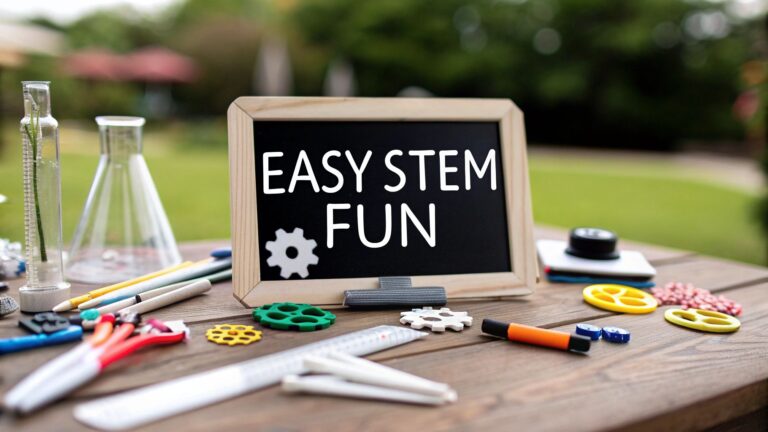
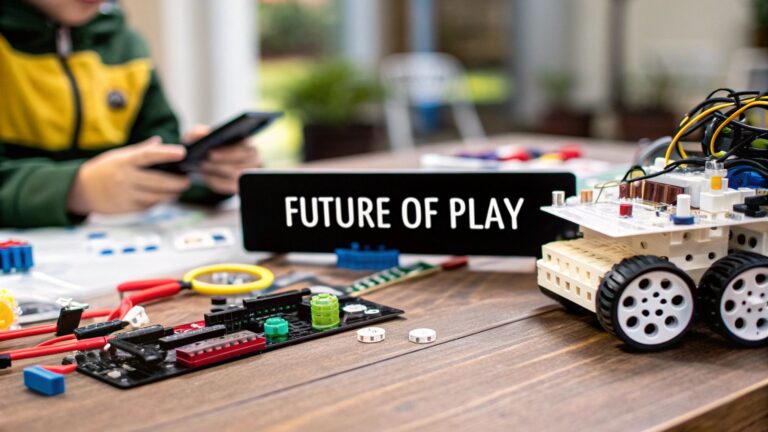
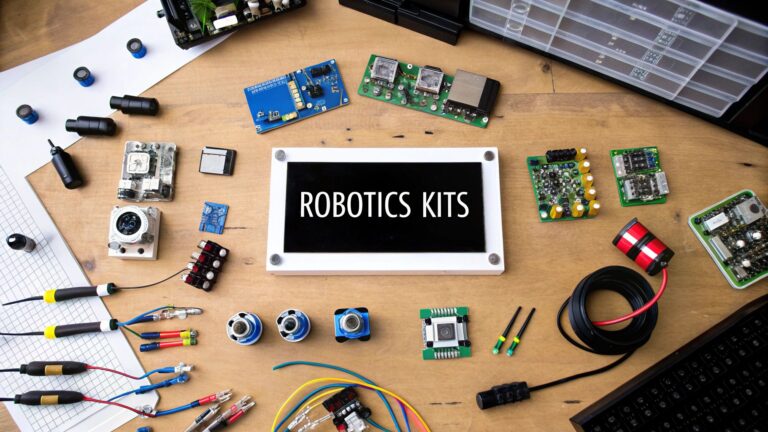






Leave a comment